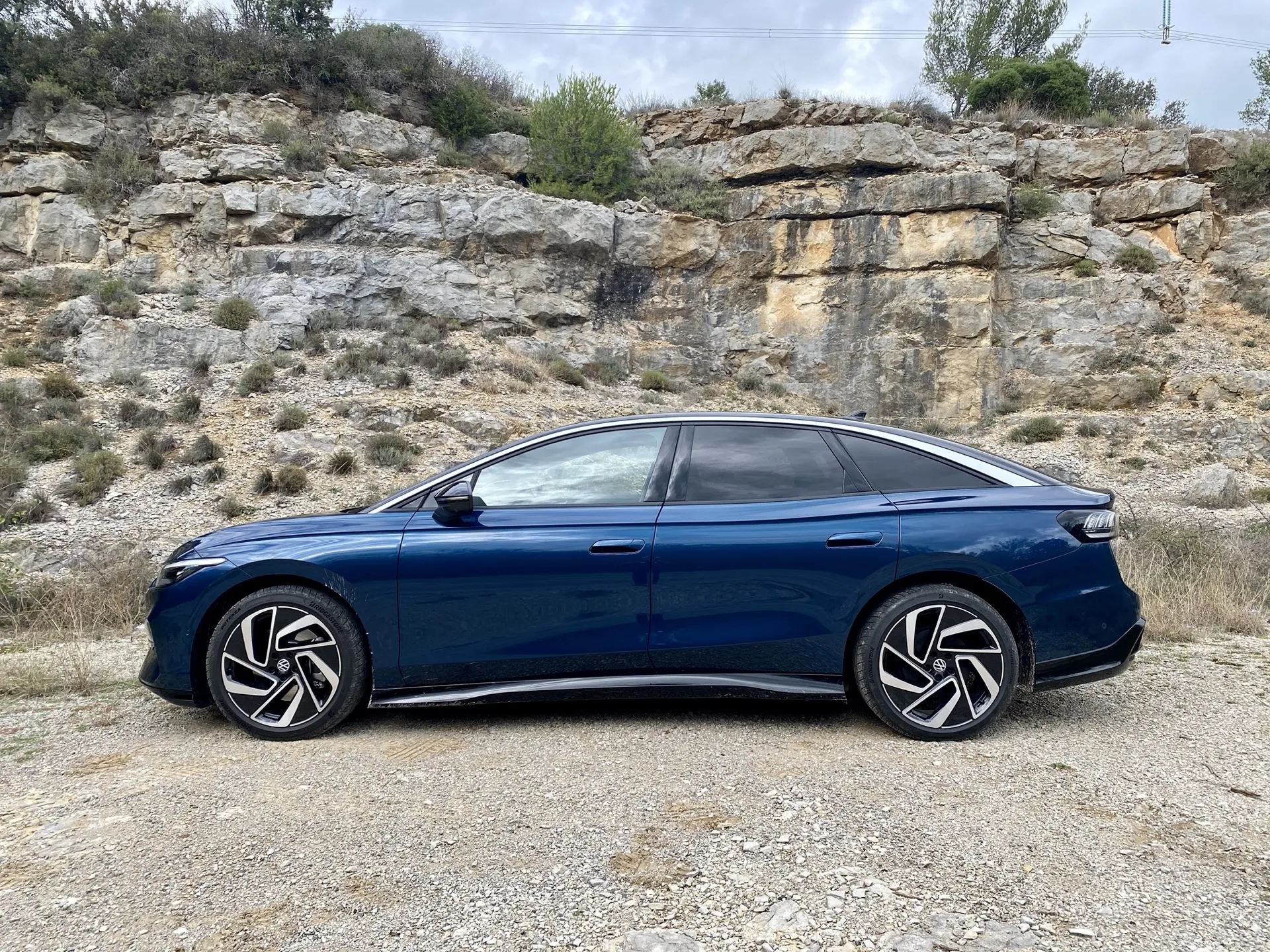Composed handling and pert acceleration each earn a point to give the 2025 Volkswagen ID.7 a 7, natch.
The ID.7 arrives in North America in the second half of 2024 with both a single-motor model and a dual-motor all-wheel-drive option. Our driving impressions are limited to the single-motor rear-wheel-drive model, for now.
How fast is the VW ID.7?
The ID.7 debuts a new, more powerful permanent magnet motor for the ID family of electric vehicles. It has more windings and stronger magnets than the ID.4, and it’s both air- and water-cooled. Rated at 210 kw, it makes 282 hp and 429 lb-ft of torque, up from 201 hp and 229 lb-ft in the ID.4, and boosts the 62 mph time to 6.5 seconds. It tops out at 112 mph, which may be a German problem on the Autobahn more than an American one. All that torque requires a new reduction gear, and a new inverter as well as additional cooling improve efficiencies and reduce frictional losses.
From a dead stop, a surge of full torque gets arrested momentarily before dashing ahead. It’s more spirited than the ID.4, but it lacks the sudden burst of power common in more powerful EVs. There’s ample power for uphill passing, and it stays in character of the touring car by being serene and quiet while cruising, but responsive when called upon.
Drivers can tap into four modes in Eco, Comfort, Sport, and Individual that stiffens the accelerator response in Sport and turns it to mush in Eco. Sport mode also tightens the steering feel, as well as firms up the available adaptive dampers. The differences are more subtle than pronounced, and a layered menu system can let you customize it in Individual mode.
A 77-kwh battery pack (82 kwh gross) feeds the motors, and the ID.7 should have a range of about 350 miles, though that hasn’t been certified by the EPA as of press time. The ID.7 can’t charge as fast as the Hyundai Ioniq 6 and doesn’t have bidirectional charging yet. DC fast-charge times at an output of 175 kw can fill the battery pack from 10 to 80% in 28 minutes, which is 10 minutes slower than the Ioniq 6 and its superior 800-volt electrical architecture. It also has an 11.0-kw onboard charger for 240-volt home charging.
There’s only one regen brake setting, set to B on the gear stalk on the column. It’s not grabby enough to make the car pull when you let off the accelerator pedal, but it’s strong enough to allow VW to slap basic drum brakes on the rear wheels. Most of the braking happens up front and through the motor, and a VW rep added that there’s less rolling resistance with drums than with disc brakes.
How does the ID.7 handle?
The ID.7 is built for comfort. VW doesn’t offset its 4,788-pound curb weight with an air suspension, instead relying on front struts and a multilink rear suspension supplemented with available adaptive damping. The large high-riding sedan feels more connected to the road than most other electric crossovers or hatchbacks.
The suspension tune keeps the nose from dipping under heavy braking, and even though driving hard into corners can nudge you in the seat, it’s never enough to tip you into the door. Hefty steering feel gets progressively tighter in Sport mode but the drive modes and granular modulations don’t move it much from its true nature of being a fine touring sedan, quiet, comfy, and with enough power to escape traffic. If seeking more potency, wait for the dual-motor GTX model.


